Rose Clementine
To be considered beautiful, a flower does not need to be impressive in size. Small buds can be very cute too. This remark is especially true for varietal ornamental plants. And now you will get acquainted with one of these perennials - the Clementine rose.
History of creation and description of the variety
The Clementine variety appeared a little over 20 years ago in Germany. The variety was bred in the famous Tantau nursery in 1997. This crop is also known under the registration name TANogrew.
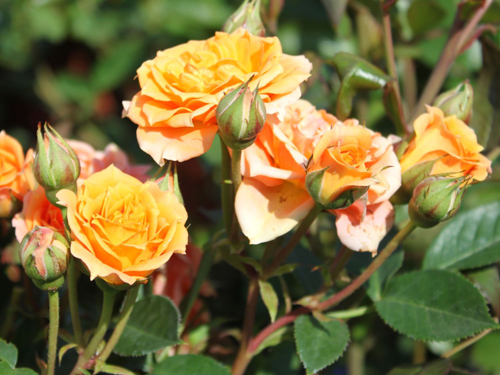
Clementine is a curb variety belonging to the miniature rose group. The bush grows no more than half a meter in height, and is strewn with small densely double flowers with a diameter of 4-5 cm. Delicate cup-shaped buds are collected in large inflorescences and are formed by 5-10 pieces per stem. With their warm apricot-orange color with peach notes, they are striking. The flowers of this variety are fragrant, but their scent is not too intense.
In width, the shrub usually does not grow much: at least 40, maximum - 60 cm. It is erect and vigorous. The shoots of the plant have a pronounced tendency to branching, but at the same time they are quite strong and do not require support. The compact bush is covered with dark green leaves with a glossy surface, creating a contrasting background for delicate flowers. Clementine blooms almost continuously throughout the season. Delightful buds always appear in a crop in large numbers.
The rose shows moderate disease resistance, especially powdery mildew and black spot. Clementine has good winter hardiness and can be grown in regions where the temperature drops to -29 ° C in winter.
Features of growing and care
Miniature perennial belongs to light-loving plants, so a well-lit sector of the site is suitable for its placement. Direct rays of the sun have a detrimental effect on the decorative effect of delicate flowers, so you should take care of keeping the culture in partial shade in the second half of a hot summer day.
Our heroine is not too demanding on the soil. The main thing is that the soil in which you are going to plant the rose is loose, light, enriched with humus and has a slightly acidic reaction. The depth of the groundwater is of particular importance: the lower it is, the better. Otherwise, there is a high risk of decay of the root system of the European beauty Clementine.
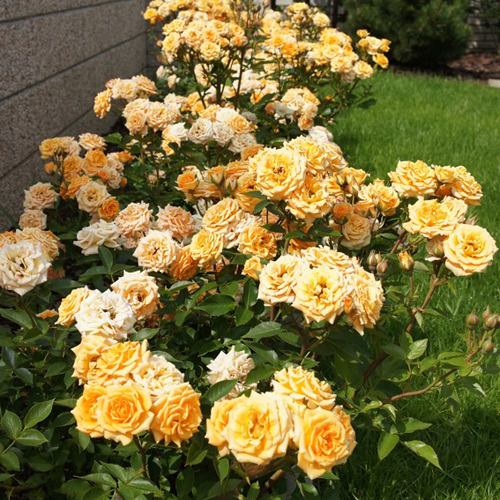
The flowering of the shrub should not be allowed in the first year of life. During the growing season, the buds that form need to be cut off. Only at the end of summer can one flower be left on each shoot. Clementine's care is standard. It includes watering, loosening the soil under the flower, weeding, feeding and pruning.
- Moistening the soil. This event is performed with soft, cold water early in the morning or in the evenings. Up to 8 liters of liquid are consumed on a rose bush. In August, watering is reduced, and at the beginning of autumn, it is completely stopped.
- Top dressing. Fertilizers for a flower are applied at intervals of 2 times a month. In spring, organic concentrates are used, during the period of budding and flowering, phosphorus-potassium or specialized complexes. It is not bad sometimes to carry out foliar feeding of a noble beauty, using a liquid vitamin preparation for this purpose.
- Pruning. The first such procedure is shown to the plant in the spring, before the buds swell. To rejuvenate the bush, all healthy shoots are shortened, leaving 2-3 (strong pruning) or up to 8 (medium pruning) buds on the stems. Pruning is needed to enhance flowering and bush formation.Faded buds should also be removed from the plant in a timely manner. And in the fall, weak and damaged shoots are removed.
Clementine can be left uncovered for the winter. But in any case, the plants must be cut and covered with dry soil. For the prevention of diseases and pests, the rose needs treatment with special preparations several times per season.
Use cases
Clementine is suitable for decorating mixborders, where plants of this variety are best planted at the edges; as well as the borders that line the garden paths. A miniature rose can be combined with other low-growing decorative flowering perennials and annuals, with herbaceous crops and conifers, for example, dwarf thujas. The shrub will successfully fit into the design of a flower garden or garden in the Rococo, Empire or Baroque style, since it goes well with elements such as graceful forged products. In addition, the variety is ideal for decorating a rose garden, forming a classic flower bed, an alpine slide; for decorating gazebos and stairs; as a striking addition to sculptural compositions. Our heroine is grown not only in the open field, but also in containers that can be easily placed on the porch of a country house or balcony.
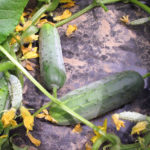
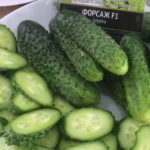



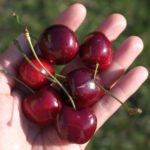



Clementine is my favorite. It has been growing in my garden for the fourth year and only makes me happy. Has formed a compact dense bush 40 centimeters in height, with numerous shoots. Blooms profusely, continuously, from late May to frost. The flowers are small, bright, look great against the background of glossy foliage. They keep their shape well in the sun, do not crumble for a long time, but fade, which is why they look untidy. I follow this and cut off the burnt-out flowers in a timely manner. Since there are a lot of buds, the type of bush does not suffer from this. The rose is not painful, it winters well without shelter in the south-east of Belarus.